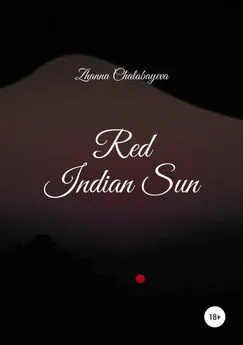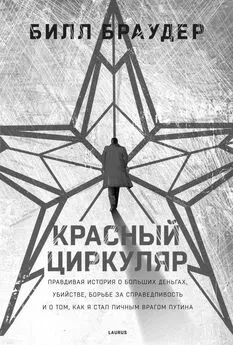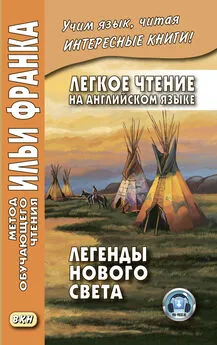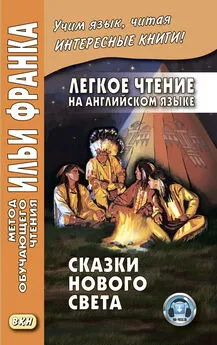Zhanna Chalabayeva - Red Indian Sun
- Название:Red Indian Sun
- Автор:
- Жанр:
- Издательство:неизвестно
- Год:2019
- ISBN:нет данных
- Рейтинг:
- Избранное:Добавить в избранное
-
Отзывы:
-
Ваша оценка:
Zhanna Chalabayeva - Red Indian Sun краткое содержание
Red Indian Sun - читать онлайн бесплатно ознакомительный отрывок
Интервал:
Закладка:
When we arrived from the airport, it was early morning, they carefully brought me tea, after tea, I lay down to take a nap, the flies would not let me rest, and I covered myself with a blanket right on top of my head. I heard some people come and the room was filled with people. Some woman pulled the blanket off my head and looked into my sleepy face, looked at me and covered again with the blanket.
I had the feeling of unreality of what was happening, some kind of magic, the kindness of nature towards me.
Then I woke up, took a shower and had lunch.
In the evening a young man, my future husband, was glowing with happiness.
– I am very glad that you came. And my dad is happy, – he said with tenderness in his voice.
– I’m glad too, honey.
– Tell me, did you like me? – He asked looking into my eyes.
– Yes, and you?
– Yes, my dear, I like you very much, – he said and kissed me for the first time.
During our dialogue, I noticed that he did not say a word about my mother.
“Probably, his mother is against me,” I thought, and fell asleep carelessly.
The next morning I sat on the bed, and a lot of people entered the room. These were the villagers. I was sleepy and felt shy. They were local women, grandmothers, and children, all of them, except for children and girls, were wearing Punjabi suites and dupatta, they had numerous bracelets on their hands, and good-quality Indian gold glittered in their ears, neck, and fingers.
They lined up against the wall so that everyone had enough space in the room, and looked at me in silence, not smiling and not blinking, as it seemed to me, some people looked at me. I was so shy and didn’t know where to hide from such attention. I looked away in confusion. They stood silently and did not move. Then I smiled at them, and they smiled back at me. Their visit ended, they turned around and left the room. When they came the next time, on the advice of my future mother-in-law, I touched the oldest women’s legs as a sign of respect. In response, they touched my head as a sign of blessing.
Then I, the young man, his brother, his sister, and her daughter went to Tohana to shop and bought me beautiful Indian clothes – I chose shalwar-kameez in marine blue and a shawl over my head – dupatta. On the way back, his sister, a pleasant girl, got off the bus, and we drove on to the village. From now on, I wore an Indian national dress. In the village, none of the married women wore European clothes.
Previously, I was not interested in Indian culture. Therefore, I did not know that a saree is not the only traditional outfit. In Haryana, women are rarely seen in a saree on a weekday. Rather, it is festive clothing. In everyday life, I saw only women in salvar-kameez and dupatta. Salvar-kameez means “pants and shirt”. In fact, a kameez shirt is most often a beautiful dress just above the knee, with different types of necklines and sleeve length, decorated with embroidery and gold threads. It is worn with salwar, which are often the same color as the top, but there are also different colors, there are form-fitting, it all depends on the design. In stores, shalwar-kameez are sold in one set with a dupatta color in harmony with the outfit.
The most magical detail in Indian women’s clothing is dupatta. It creates a mysterious image of a woman, hides her face, protects from annoying glances and from the sun.
Dupatta is a long scarf of the finest fabric. Married women cover their heads with a dupatta, and unmarried girls fashionably oblige a scarf around their neck and chest.
I noticed that when a married woman sees a man older than her, she covers her face with a dupatta. In particular, my mother-in-law covered her face as soon as some grandfathers entered the house. At such moments she looked very feminine.
Fabrics in India are always of good quality. The production of fabrics there has been calculated for thousands of years, cotton has been used since the third millennium BC. In ancient times, people living in the territory of modern India discovered the special properties of plants that give different colors to fabrics. Since then, the paint has been used in the manufacture of fabrics. Thus, India became the first country on the planet where multicolored fabrics appeared. It is also known that in India men painted their beards in the most unexpected colors.
Salwar-kameez, or Punjabi Suite, which I bought on the second day of arrival in India, I chose myself. It was aquamarine, satin, chiffon and with gilded patterns sewn onto the fabric. Dupatta was the same color of chiffon.
In the village, men of different ages wear a white ensemble of a long shirt and pants.
In the cold weather in India, I saw a lot of men who walked wrapped in a blanket.
Urban youth most often dress in the same way as in the West.
The shops in Tohana sell all kinds of clothes: national outfits and fashionable dresses, tops and jeans. Compared to other countries, clothing in India is cheap, but the quality is at its best.
Footwear in India is also national and ordinary. In the village, people walk in shales, wear national shoes or European shoes embroidered with stones and rhinestones to celebrations.
My future husband in the heat and in the cold, at the wedding and the police wore tight sports sneakers, put on thick socks. When I offered to buy other shoes, he bought himself new sports sneakers, which differed from the previous ones only in the color of the laces. His friends who came to us were shod in good-quality men’s sandals and fashionable shoes.
Together with salwar-kameez, I bought gorgeous ballet shoes in the national Indian style, embroidered with gold rhinestones, through which colored threads were intertwined with snakes.
On the streets, you can see men with a beautiful turban on head.
I walked through the market and looked at the passers-by. I could not believe that I was in the real world. It seemed to me that I was in an oriental tale or on the set of a film.
I noticed that Indian people have rare beauty, delicate features, large eyes with infinitely long doll eyelashes.
In the village of Samain, I saw the stunning beauty of a woman of about fifty. She had huge emerald eyes framed by two-centimeter velvet eyelashes, olive skin color, and all facial features harmoniously combined with each other as if painted by a talented artist. On her head she carried a metal basin, not holding it with one hand. It was evident that she was engaged in physical labor, but even her tired look did not hide her natural beauty, but, on the contrary, emphasized.
Often I looked at my Dadi and admired her. A thin, toned face with large blue eyes and a straight nose. Grandma was already ninety years old. But the sculpture of her face has not changed since her youth. There were deep wrinkles on her face. And in the bottomless eyes, the naughty light of former youth played. Still, only the body is aging, and the soul remains forever at the age when the person loved the last time.
* * *
Before bed, I tactfully asked me to bring a sheet and a duvet cover. But Tenardieu said that they did not use sheets and duvet covers in the house.
He slept on a synthetic bedspread and covered himself with a thick blanket. All the guests visiting the house were lying on the same bedspread during the day or sitting with their feet.
The next day, the young man’s mother smiling brought me a beautiful sheet of yellow satin fabric with blue flowers and a golden pattern. But she said that they were not sleeping on this, but, on the contrary, they sometimes covered the bed for beauty during the daytime.
How did I suffer in my soul when guests came to the house and lay down on our pillows with head, and someone did not hesitate to fold unwashed feet. The fact is that there was no spare pillowcase either, and instead of a pillowcase, I laid out one of the new hand towels that I brought with me. But it was still unpleasant, and it seemed to me that then the pillow smelled of someone’s feet.
For many years, I did not wash by hand and did not wash the dishes with my hands, as I had a dishwasher and an automatic washing machine. In the house of my future husband, almost everything was done manually. Small things were washed right on the granite floor, soaping and beating on the floor.
The washing machine was semi-automatic and assumed a constant presence to drain and pour water into the tank, and then shift it to the centrifuge.
There was also no trash can in the house. After peeling vegetables, the peel was dumped in a corner of the kitchen, cigarette butts were thrown right there on the floor next to them. Then when cleaning the room it was all swept away in a heap, shifted to the basin. Basin put on his head and carried to the dump. The dump was spontaneously located. That is, at the end of our small street, one needs to go out onto a large road, cross it, and rubbish was thrown onto the side of the road. There were already piled mountains of garbage, and no one took them out for recycling. We did the house-keeping with my mother-in-law and grandmother-in-law every day, so it was clean. I often saw the old grandmother in some kind of homework, such as cleaning vegetables or sweeping the floor.
In India, you will rarely find garbage bins. The local population throws small rubbish everywhere, but not near their home. Large waste is carried to an arbitrary landfill, which, as a rule, is located every 500 meters. But in Indian houses, cleanliness is impeccable, even the poor wives have dusty clay floors in dugouts for days on end.
Drainage was also absent. In front of our house, the pavement was dismantled, and the car was pumping waste from the pit. At such moments, you begin to appreciate what you have not noticed around you before – the livability and comfort of modern apartments.
In the kitchen, huge cockroaches constantly crawled out of the pipe into the sink. I have never seen such big ones before. Each cockroach was four centimeters. There were also ordinary small cockroaches.
The first time I saw them was when I brewed tea in an aluminum scoop on the stove. My future husband was standing nearby. Then he suddenly said:
– Next to you crawling cockroach.
For fear, I screamed so loudly that people could hear me in the next village. I jumped onto the back of the young man and hung on it, continuing to scream with fear.
His father entered the kitchen, frowned and asked:
– What happened?
– She saw a cockroach.
He looked at me, laughed, and left.
Much to my surprise, I learned that my future husband was not at all afraid of cockroaches. Not even the slightest hostility to them.
– So what if cockroaches. They are also living beings. As a child, we even played with them, planted them in our palms, he said good-naturedly and smiled, as if recalling his childhood friends.
* * *
In the evening, I asked the young man and his family to come down. I said that I prepared something interesting for them.
Then they came into the room and sat around the table. I laid out a gift for a gift, brought from Moscow, and presented them to each family member.
When I gave my mother-in-law bracelets, contempt flashed in her huge tarry-black eyes. On the face of my future husband was a painful disappointment.
Immediately after the parents left the room, the young man arrogantly stated that the Italian dress, which I brought to his niece, he can buy from a flea market for a hundred rupees, but not for many thousands, and all the other gifts are cheap.
Then, squinting, he told me:
– You don’t seem to have money for a study in the USA. On what money were you going to go to America?
Читать дальшеИнтервал:
Закладка:


![Нэнси Митфорд - Король-Солнце [The Sun King]](/books/1072357/nensi-mitford-korol-solnce-the-sun-king.webp)
![О Генри - Бабье лето Джонсона Сухого Лога [The Indian Summer of Dry Valley, Johnson]](/books/1076181/o-genri-babe-leto-dzhonsona-suhogo-loga-the-india.webp)






